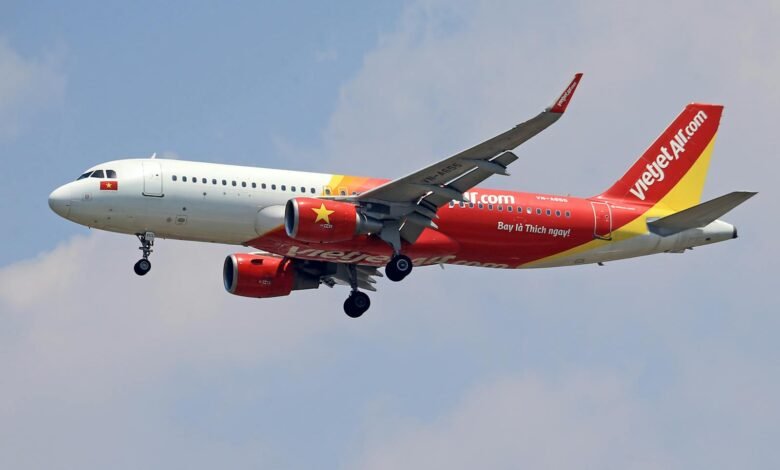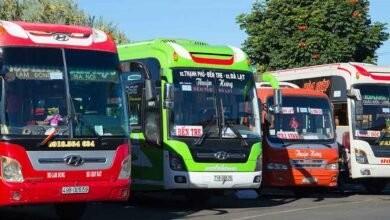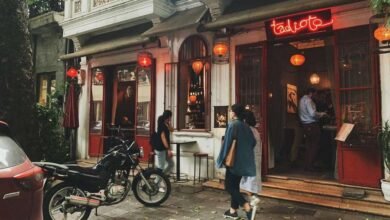
Vietnam is known for its well-connected and affordable transportation options, making it easy for travelers to explore everything the country has to offer. Whether you’re navigating the bustling streets of Hanoi, cruising down the coast, or venturing into the countryside, Vietnam’s transportation network has something to suit every traveler. Here’s a comprehensive guide to getting around Vietnam, from buses and trains to motorbikes and flights.
1. Domestic Flights – Fast and Convenient for Long Distances
Overview: For travelers short on time or looking to cover long distances quickly, domestic flights are the fastest way to travel between Vietnam’s major cities. Vietnam Airlines, VietJet Air, and Bamboo Airways offer affordable flights connecting cities like Hanoi, Ho Chi Minh City, and Da Nang.
Pros:
- Time-efficient: Ideal for traveling quickly between far-apart cities.
- Affordable: Frequent promotions make flights relatively budget-friendly.
Cons:
- Environmental impact: Flying has a larger carbon footprint.
- Possible delays: Budget airlines may have occasional delays.
Tip: Book flights in advance to get the best deals, especially if you’re traveling during peak tourist seasons.
2. Trains – Scenic and Comfortable Long-Distance Travel
Overview: Vietnam’s Reunification Express train line runs from Hanoi in the north to Ho Chi Minh City in the south, with stops in cities like Hue and Da Nang. Trains are a scenic and relaxed way to see the countryside and coastline.
Types of Seats:
- Hard Seat and Soft Seat: Basic seats, suitable for short journeys.
- Sleeper Berths: Hard and soft sleepers for longer journeys; soft sleepers are more comfortable and ideal for overnight travel.
Pros:
- Scenic Views: Enjoy picturesque landscapes as you travel.
- Comfortable: Sleeper options are ideal for long distances.
Cons:
- Long travel times: Trains can be slower than buses for some routes.
- Pricey for long routes: Longer routes, especially with soft sleeper berths, can be relatively expensive.
Tip: Book train tickets in advance through official websites or reliable travel agencies, as popular routes can fill up quickly.
3. Buses – Affordable and Widely Available
Overview: Buses are one of the most popular and affordable ways to travel around Vietnam, especially for budget travelers. From local buses to long-distance sleeper buses, there are options for every type of journey.
Types of Buses:
- Local Buses: Great for short distances within cities, though schedules can be inconsistent.
- Sleeper Buses: Equipped with reclining seats for overnight travel between major cities, sleeper buses are very popular among budget travelers.
Pros:
- Low cost: Often the cheapest form of travel between cities.
- Variety of options: Sleeper, express, and local buses are widely available.
Cons:
- Comfort levels vary: Some buses may be crowded, especially local buses.
- Long journey times: Buses are often slower due to traffic and multiple stops.
Tip: Choose reputable bus companies, such as Sinh Tourist or Futa Bus Lines, for a more reliable and comfortable experience.
4. Motorbikes – A Favorite for Adventurous Travelers
Overview: Riding a motorbike through Vietnam has become a bucket-list experience for adventurous travelers. Motorbikes offer flexibility and freedom to explore at your own pace, whether you’re touring a city or embarking on a multi-day journey down the Hai Van Pass.
Pros:
- Ultimate freedom: Set your own schedule and explore less accessible areas.
- Scenic routes: Ride through stunning landscapes, particularly on routes like the Hai Van Pass.
Cons:
- Safety concerns: Vietnam’s traffic can be chaotic, especially for inexperienced riders.
- Legalities and licensing: Be aware of licensing requirements and insurance coverage.
Tip: Wear a helmet and ensure you have the necessary documentation (an international driving permit) if you plan on renting or purchasing a motorbike for extended travel.
5. Taxis and Ridesharing – Convenient for City Travel
Overview: Taxis and ridesharing apps like Grab (similar to Uber) are widely available in Vietnam’s major cities, offering a comfortable way to travel short distances.
Pros:
- Easy to use: Available via app, with options for cashless payment.
- Convenient: Ideal for city travel and short distances.
Cons:
- Higher costs: More expensive than local buses or motorbike taxis.
- Traffic delays: City traffic can cause delays during peak hours.
Tip: Always ask the driver to use the meter if you’re taking a regular taxi, or book through the Grab app to avoid misunderstandings over fares.
6. Ferries and Boats – Ideal for Island Hopping and Coastal Routes
Overview: Ferries and boats are the primary mode of transportation for reaching Vietnam’s islands, such as Cat Ba, Phu Quoc, and the Mekong Delta. Boats also offer scenic tours of Halong Bay and Ninh Binh.
Popular Routes:
- Halong Bay Cruises: Ranging from budget day trips to luxury overnight cruises.
- Mekong Delta Tours: Explore the river’s floating markets and rural landscapes by boat.
- Ferries to Phu Quoc: Fast ferries connect the mainland with popular island destinations.
Pros:
- Scenic: Boat rides offer beautiful views and access to coastal destinations.
- Unique experience: Floating markets and island hopping are memorable highlights.
Cons:
- Weather-dependent: Ferries may be delayed or canceled in bad weather.
- Limited options: Boat schedules may not run as frequently as buses or trains.
Tip: Book boat tours through reliable operators, especially in high-tourist areas like Halong Bay, to ensure safety and comfort.
7. Bicycles – A Great Way to Explore Towns and Rural Areas
Overview: Bicycles are a great, eco-friendly way to explore smaller towns like Hoi An or rural villages in the Mekong Delta. Many hotels and hostels offer free or low-cost bike rentals.
Pros:
- Affordable and eco-friendly: Cycling is budget-friendly and has minimal environmental impact.
- Accessible in small towns: Ideal for exploring quiet neighborhoods, markets, and countryside.
Cons:
- Not ideal in major cities: City traffic can be hectic and unsafe for cyclists.
- Weather limitations: Cycling may be uncomfortable in hot or rainy conditions.
Tip: Consider renting an e-bike if you’re covering longer distances or if you’re not used to cycling in the heat.
Conclusion
Vietnam offers a range of transportation options for every travel style and budget. From quick domestic flights and scenic train rides to adventurous motorbike journeys and relaxing ferry rides, there’s a way to get around that suits everyone. With this guide, you’ll be ready to navigate Vietnam’s cities, countryside, and coastal areas with confidence.



